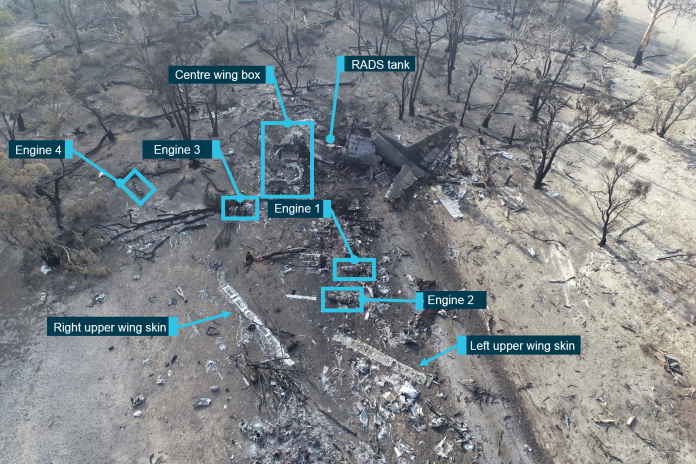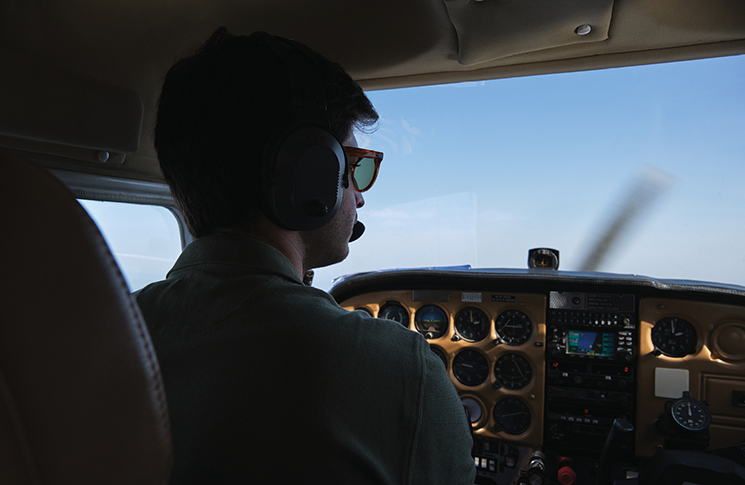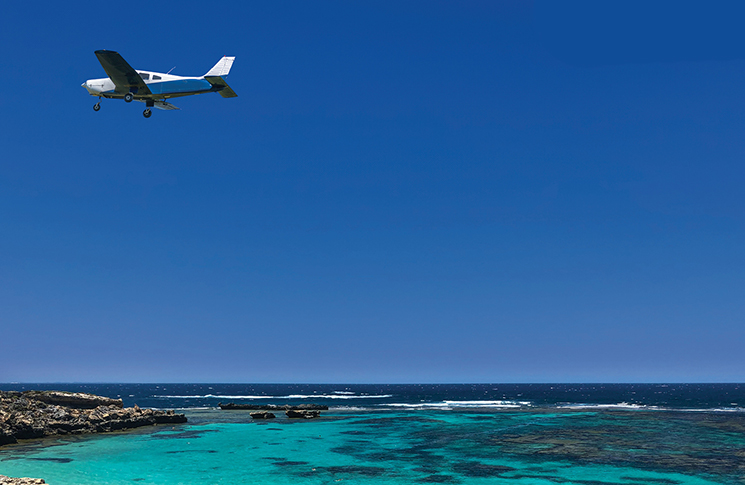A lack of complete situational information and defined procedures contributed to the crash of a Lockheed C-130 Hercules during the catastrophic bushfires of January 2020, the Australian Transport Safety Bureau’s (ATSB) final report into the crash says.
The crash, at Good Good fire-ground, at Peak View, near Cooma, NSW, killed 3 US aircrew on 23 January 2020. The ATSB report, issued this morning, was delayed by lack of information from the aircraft’s cockpit voice recorder, which stopped working before the final flight.
The EC-130 crew had flown from Richmond, near Sydney to drop fire retardant on a site near Adaminaby. But the crew assessed this drop site as not suitable and accepted an alternative drop at Good Good. They flew several precautionary circuits before committing to a drop. After making a partial retardant drop the aircraft made a left turn and climbed for about 10 seconds to about 170 ft above drop height. Soon after it descended and made a significant left roll just before ground impact. The ATSB found the aircraft was very likely subjected to hazardous environmental conditions including low-level windshear and an increased tailwind component and it was likely the aircraft aerodynamically stalled before hitting the ground.
The C-130 Hercules had attempted a drop on a day when the smaller ‘birddog’ lead aircraft had declined the flight to Adaminaby, and a Boeing 737 tanker was returning to Richmond from Adaminaby after assessing the conditions there as unsafe for a drop.
‘This information was not communicated by the RFS [NSW Rural Fire Service] to the C-130’s crew,’ the report says.
The Boeing 737 Tanker pilot called the C-130 and had a conversation which according to recollection included that the 737 was ‘getting crazy winds’ and ‘you can go take a look’ ’but I am not going back’.
ATSB chief commissioner Angus Mitchell said responsibility for the safety of aerial firefighting operations had to be shared between the tasking agency and the aircraft operator.
The ATSB found that the tasking agency, the RFS, had limited large air tanker policies and procedures for aerial supervision requirements and no procedures for deployment without aerial supervision. In addition, the RFS did not have a policy or procedures in place to manage task rejections, nor to communicate this information internally or to other pilots working in the same area of operation.
The investigation found that the operator Coulson Aviation’s safety risk management processes did not adequately manage the risks associated with large air tanker operations, in that there were no operational risk assessments conducted or a risk register maintained.
Mitchell said the accident highlighted the importance of having effective risk management processes, supported by robust operating procedures and training to support that shared responsibility.
The ATSB noted Coulson Aviation and the RFS had taken proactive safety actions before the report was issued. Coulson’s changes included introducing a pre-flight risk assessment tool, a new three-tiered risk management approach, and windshear procedures and training.
The RFS had committed to undertake a comprehensive review of RFS aviation doctrine and undertake detailed research to identify best practice (nationally and internationally) relating to task rejection and aerial supervision policies and procedures as well as initial attack training and certification. The ATSB issued 3 safety recommendations to the RFS and 2 to Coulson Aviation.
The chief commissioner paid tribute to the crew: pilot Ian McBeth, first officer Paul Clyde Hudson and flight engineer Rick DeMorgan Jr. ‘All three were far from home helping to defend lives and property, during the worst fire season in Australia on record,’ he said.






I believe I saw this aircraft in action, during the fires that raged in the vicinity of The Oaks, NSW, in late 2019.
On the day there were several large “jet” aircraft, the only turbo prop was a Hercules and one small twin (“birddog”) possibly an Aero Commander, high above. There may also have been helicopters but it was the fixed wings that grabbed my attention.
From my vantage point, just a few kilometres from the fire front, it was something akin to being present at an extraordinarily vigorous & dramatic flying display, without the usual rules of safe seperation between aircraft & observers below. The aircraft seemed to fly over us at near tree top height (an illusion due to their size, the noise and drama of the action ?)
Of all the aircraft, the Hercules seemed to be taking the greater risks. Only the Herc seemed, on several passes, to descend below the ridge tops.
The Hercules was probably “dropping” about 3-5 kilometres from me with the heavily ridged terrain rising from my location, so there may have been some visual distortions but the fact remains no other aircraft appeared to make its retardant drops anywhere near as low as the Hercules.
The crash, of this aircraft, just weeks later, was not a great surprise to me.
I have been involved with the RFS for many tears, as well as the 2019 Fires. I am no longer with the RFS. One thing I have always noticed with the RFS is their reluctance to transmit on the radio’s, especially air band. To them it is “some kind of mystery”
Thanks, that’s an interesting perspective. I’ve been involved in RFS for many years too, up to divisional commander. What I’ve always appreciated with rotary-wing operations is being in direct contact with pilots – all the contracted aircraft have VHS and sometimes dedicated RFS radios which make it very easy to communicate. What I’ve found with the larger fixed wing aircraft is that operations are out of our hands – they’re all managed by air ops. So we’re likely to be just told that an aircraft is coming in at a specified location and time and that’s it. While they are useful resources, I’ve seen many drops that were next to useless eg. retardant lines with no anchor points.